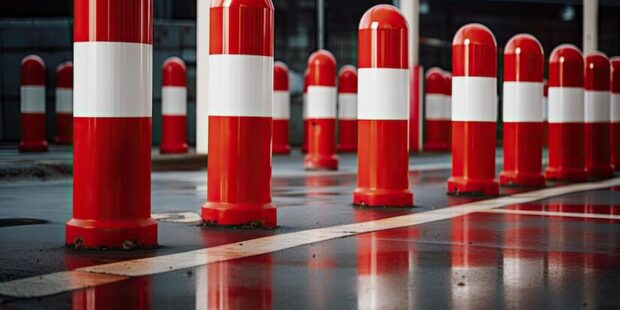In the bustling streets of modern cities, safety and aesthetics often go hand in hand. Once merely functional, barriers have evolved into integral elements of urban design, offering security and contributing to the visual appeal of our urban landscapes. From safeguarding against vehicular attacks to seamlessly blending with architectural motifs, these structures have transcended their utilitarian roots to symbolise the harmonious intersection between safety and style. This article delves into the multifaceted role of bollards in shaping contemporary urban aesthetics.
The Rise of Bollards in Urban Security
In an era of security concerns, bollards have emerged as frontline defenders against vehicular threats in urban environments. Whether deployed around government buildings, pedestrian zones, or cultural landmarks, these sturdy posts act as barriers, preventing unauthorised vehicle access while allowing pedestrian flow. With the unfortunate rise in vehicular-based attacks globally, the demand for robust bollard solutions has soared, prompting innovations in materials, deployment mechanisms, and design aesthetics.
Blending Functionality with Form
Gone are the days when bollards were eyesores relegated to the periphery of urban landscapes. Today, designers and architects integrate these security features seamlessly into the built environment, marrying functionality with form. Now available in a myriad of shapes, sizes, and materials, urban fixtures offer customisable options to complement the distinct character of each space. Whether resembling historic lampposts, contemporary sculptures, or minimalist steel structures, these versatile design elements have evolved to enhance rather than detract from the aesthetic unity of their surroundings.
Bollards as Cultural Signifiers
Beyond their practical role, bollards often carry cultural significance, symbolising resilience, identity, and collective memory. In historic districts, traditional bollard designs may evoke bygone eras, providing a visual link to the past while safeguarding heritage sites from modern threats. Conversely, in avant-garde urban developments, other elements may adopt futuristic forms, echoing the cutting-edge architecture of their surroundings. Whether preserving tradition or signalling progress, these features reflect the cultural ethos of their communities, imbuing urban spaces with layers of meaning and narrative.
Sustainability and Innovation
As sustainability becomes increasingly paramount in urban planning, bollards have adapted to meet eco-conscious standards. Manufacturers now offer options crafted from recycled materials, such as composite plastics or reclaimed metals, reducing environmental impact without compromising durability. Furthermore, technological advancements have led to integration of intelligent features into bollard systems, enabling remote monitoring, energy efficiency, and adaptive responses to changing security needs. By marrying sustainability with innovation, these structures pave the way for greener, smarter, and safer future cities.
Community Engagement and Public Art
Beyond their practical purposes, bollards have also become canvases for community engagement and public art projects. Cities worldwide have embraced the concept of “art installations,” inviting local artists to transform these functional structures into vibrant works of art. These installations inject creativity and personality into otherwise mundane streetscapes, from colourful murals depicting local cultural scenes to interactive pieces inviting passersby participation. Moreover, these initiatives foster a sense of ownership and pride among residents as they witness their neighbourhoods transformed into open-air galleries that celebrate diversity and creativity.
Adaptive Urban Design and Flexible Spaces
The versatility of bollards extends beyond their physical form to their role in shaping dynamic urban spaces. In response to evolving needs and trends, cities embrace flexible design principles that allow for the temporary reconfiguration of public spaces. Removable or retractable barriers enable streets to seamlessly transition from vehicle thoroughfares to pedestrian plazas, accommodating events, markets, or leisure activities. By providing the infrastructure for adaptable urban design, these barriers empower cities to optimise space utilisation, enhance social connectivity, and foster vibrant street life.
Accessibility and Inclusivity
Inclusive urban design principles prioritise accessibility for all community members, including those with mobility challenges. When strategically placed and designed, Bollards can create barrier-free environments. By delineating pedestrian zones, providing visual cues, and ensuring clear pathways, barriers enhance pedestrian safety and navigation, including those using mobility aids or navigating with visual impairments. Additionally, barriers can be integrated with tactile paving and audible signals to enhance accessibility further, ensuring that urban spaces are welcoming and inclusive for everyone.
Future Trends and Innovations
As urban environments continue to evolve, so will the role of bollards in shaping the cities of tomorrow. Future trends may involve integrating emerging technologies such as artificial intelligence, autonomous vehicles, and augmented reality with urban infrastructure for enhanced functionality and efficiency. Innovative bollard systems equipped with sensors and communication capabilities could provide real-time data on pedestrian flows, environmental conditions, and security threats, enabling proactive management of urban spaces. Moreover, advancements in materials science may lead to the development of barriers that are stronger, more resilient, lighter, more sustainable, and easier to install. By embracing these innovations, cities can stay ahead of the curve and create safer, more efficient, and more adaptable urban environments for future generations.
In conclusion, the humble bollard has transcended its traditional role as a mere security fixture to become a symbol of urban resilience, creativity, and cultural identity. As cities evolve to meet the challenges of the 21st century, bollards will continue to play a pivotal role in safeguarding public spaces while enhancing their aesthetic appeal. By blending security seamlessly with style, functionality with form, and tradition with innovation, urban design features exemplify the evolving ethos of contemporary urban design. As we navigate an increasingly complex urban landscape, let us not overlook the silent sentinels that stand guard, protecting and beautifying the cities we call home.
Through the lens of urban aesthetics, bollards emerge as barriers and beacons, guiding us toward a future where safety and style seamlessly coexist in harmony.



